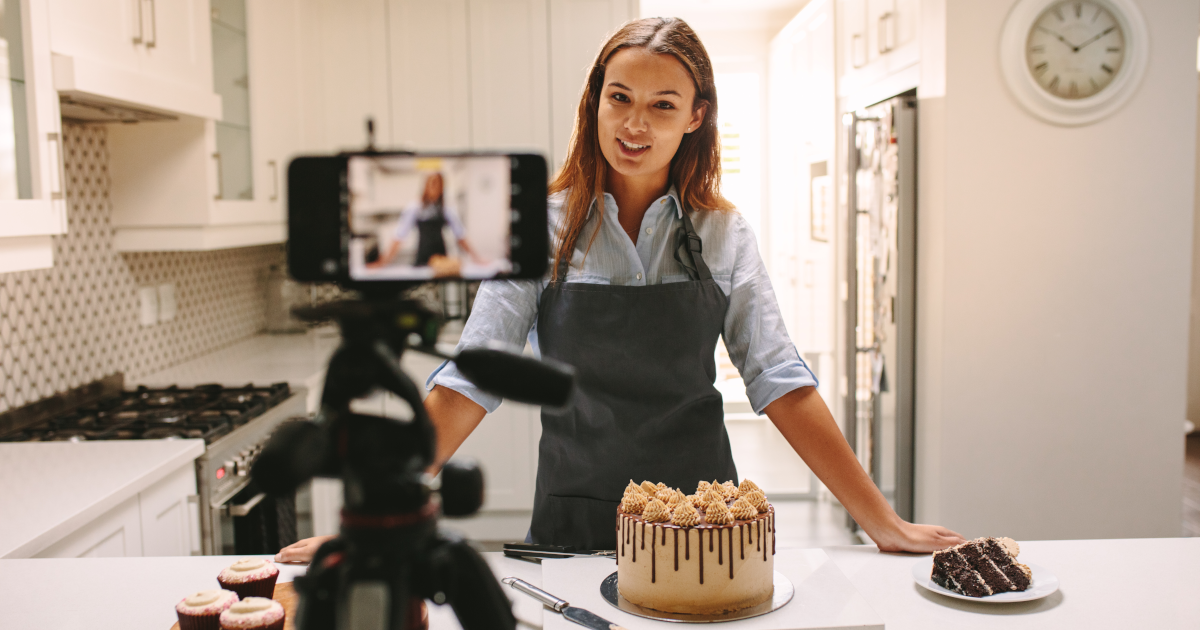Can I Apply for a PPP Loan for My Side Hustle?


Swyft Filings is committed to providing accurate, reliable information to help you make informed decisions for your business. That's why our content is written and edited by professional editors, writers, and subject matter experts. Learn more about how Swyft Filings works, our editorial team and standards, what our customers think of us, and more on our trust page.
Swyft Filings is committed to providing accurate, reliable information to help you make informed decisions for your business. That's why our content is written and edited by professional editors, writers, and subject matter experts. Learn more about how Swyft Filings works, our editorial team and standards, what our customers think of us, and more on our trust page.

The first Paycheck Protection Program (PPP) was established by the 2020 US Federal government Coronavirus Aid, Relief, and Economic Security Act (CARES Act). It aimed to help small businesses continue paying their workers during unprecedented financial turmoil resulting from the Coronavirus Pandemic. However, many eligible companies missed the opportunity to take advantage of these loans amid confusion about the program and limited available funds.
Many of America's self-employed missed out on the first round of PPP loans. The good news is that round two of the PPP loan program resumed on January 11, 2021, and sole proprietors, independent contractors, and self-employed individuals are encouraged to apply. Keep reading to learn if you qualify, how to apply, and ways to get your PPP loan forgiven.
To check on eligibility and apply immediately, please visit our good friends at BlueVine today. They are ready to assist Swyft Filings customers.
Yes, Even if You Have Not Formed an LLC, You Still Qualify
Many freelancers and side hustlers have incorrectly assumed they do not qualify for a PPP loan because they have not incorporated their business as an LLC or S-Corp. However, if you filed a Form 1040 Schedule C on your 2019 tax return, you likely qualify to receive a PPP loan. Anyone who uses a 1040 tax form is considered a sole proprietor of a small business, even if you have never formed an LLC or filled an incorporation status with your state. As such, your business could be covered by a PPP loan.
Effortlessly obtain an EIN with our automated filing process and with the support and expertise of our team
What if I Don't Have a Business Checking Account, EIN, or Employees?
Even if you do not have some of the traditional trappings of a small business, like a business checking account, Employer Identification Number (EIN), or employees, you can still qualify. As a sole-proprietor who has filed the appropriate 1040 Form on your tax return in 2019, you will be able to demonstrate that your side-hustle is, in fact, a small business, and you should be able to proceed with your PPP loan application.
What Are the Qualifications To Apply?
The second round of the PPP loan program has been updated slightly from the first. For example, the maximum number of employees went from 500 down to 300, and the maximum loan a business can receive dropped from $10 million to $2 million.
As a small business, freelancer, or self-employed individual, these changes likely don't affect you. Anyone who collects a 1099 may qualify, in addition to those who have 1065s or 1120s with no employees. However, you must meet the following requirements to be eligible:
Your business must have been operating before February 15, 2020
You must live in the United States
You must have filed a Form 1040 Schedule C for 2019
You must have shown a profit on your 2019 tax return
You must plan on filing Form 1040 Schedule C for 2020
You need to be able to show a 25% reduction in gross receipts in a quarter of 2020 compared to the same quarter in 2019
If you received a PPP loan during round one, you must spend those funds before applying for round two
What's The Deadline to Apply?
If you meet the qualification requirements listed above, you should act quickly to apply for your PPP loan. The U.S. Small Business Administration (SBA) started accepting applications for the second round of PPP Loans on January 13, 2021, and will stop accepting them on March 31, 2021.
While many of these loans will be first come, first serve, the SBA is setting aside some money for qualifying small businesses. According to the SBA website, "At least $25 billion is being set aside for Second Draw PPP Loans to eligible borrowers with a maximum of 10 employees or for loans of $250,000 or less to eligible borrowers in low or moderate income neighborhoods."
How Much Money Could I Receive?
For corporations, the amount is calculated based on their average monthly payroll expenses. Businesses may request a loan up to 2.5 times their average monthly payroll. However, as an independent contractor or self-employed person, payroll calculations will not apply as you have no employees. Instead, your loan amount will need to be determined using your 1040 tax form.
To calculate your maximum loan amount, first, take the number from your 2019 Schedule C income on line 31 of the return. Then, divide that number by 12. Lastly, multiply that number by 2.5, and you will have your maximum loan amount. Below are a few examples of what that may look like:
Net Profit From Line 31 | Divided by 12 Months | x 2.5 (Final Loan Amount) |
|---|---|---|
$30,000 | $2,500 | $6,250 |
$60,000 | $5,000 | $12,500 |
$90,000 | $7,500 | $18,750 |
With No Staff or Payroll, What Can I Use the PPP Loan Money For?
The requirement to maintain staffs' employment status and their current payroll will not apply to self-employed individuals, independent contractors, and sole proprietors. To apply for loan forgiveness, you will need to use any loan money on a qualifying expense as outlined by your forgiveness application. Some forgivable expenses for freelancers include:
Cash tips
COVID-related protective measures
Mortgage interest
Necessary supplier costs
Parental, family, or medical leave
Property damage from civil unrest
Rent
Retirement benefits
Sick pay
Software
Some supplier costs and expenses for operations
Utilities
Uninsured property damage costs caused by looting or vandalism in 2020
Vacation
When Does the Loan Need To Be Repaid?
All PPP loans offer 10 months of deferred payments. When you meet certain requirements by spending your loan money on approved forgivable expenses mentioned above, you may never have to pay back a penny. However, you must also apply for forgiveness through your lender. Your chosen lender will also give you additional repayment details based on your specific loan.
4 Tips for Getting Your PPP Loan Approved Quickly
If round one of the PPP loans taught us anything, it is that time is essential when applying for these loans. Start today to follow the tips below to ensure your loan is quickly submitted, approved, and funded.
1. Calculate Your Loan
First, you will need to verify that you had a 25% decrease in gross income in any quarter of 2020 compared to that same quarter of 2019. Once you have verified that, you can calculate your loan amount by averaging your total gross profits from 2019 using line 31 of the 1040 schedule C tax return.
If this number is negative, you are out of luck. If it's positive, take that number and divide by 12 to get your monthly average. From there, simply multiply your monthly average by 2.5 to get your maximum loan amount.
2. Have Your Paperwork Ready to Go
Here is what you will need to apply for a PPP loan as a freelancer:
Copy of your 2019 1040 Schedule C
Any 1099 you received in 2019
Bank statements to verify you were in operation before February 15, 2020
Copy of unexpired, government-issued driver's license, passport, or other state-issued ID (copies of front and back)
Current email address
Electronic funds transfer information to receive funds from your lender
3. Apply to Multiple Lenders if Needed
Some lenders are only accepting PPP loan applications from existing customers with business accounts. If you do not have an existing business account with a bank or credit union, you may need to search for the right lender accepting freelancer applications. You are allowed to apply to multiple lenders to help increase your likelihood of approval. However, you must withdraw your pending applications as soon as you receive approval from a lender.
4. Apply as Early as Possible
The first round of PPP loans was approved on a first-come-first-serve basis. This meant funds ran out quickly to those that applied first. While round two has some stipulations to set aside funds for qualified borrowers with fewer than 10 employees, time is still of the essence when applying for a PPP loan.
After Your Loan is Approved, Don't Forget to Apply for Forgiveness
After you have used all of the loan's money, you can submit a loan forgiveness application anytime before your loan's maturity date. Your lender can provide more specifics on how to fill out and submit your forgiveness application. Remember, all funds must be spent on qualifying expenses to receive loan forgiveness.
TLDR: PPP Loans for Busy Freelancers
Freelancers and side hustlers are busy — we get it. So, here are the key takeaways for you on round two PPP loans:
You can apply without incorporating
You must have filed a 1040 Schedule C in 2019 with the IRS
You must have made a profit in 2019
You must have experienced a 25% decrease in gross profits in any quarter of 2020 compared to that same quarter in 2019
Your loan amount can be up to 2.5 times your average monthly income during 2019
Loans can be forgiven up to 100% when used on qualifying expenses
The application process ends on March 31, 2021
For more details, check out our article
Protect your personal assets from business debts
Save money through exclusive tax benefits
File online, starting at $0 + state fees
Not Sure Where to Start? Apply With Our Good Friends at BlueVine Today!
At Swyft Filings, we want to help connect our customers with a lender that understands a freelancer's needs. BlueVine is ready to help you secure a PPP loan for your side hustle today. Apply online now and receive an answer in just minutes. Visit the BlueVine PPP loan application page now to learn more.
Swyft Blog
Everything you need to know about starting your business.
Each and every one of our customers is assigned a personal Business Specialist. You have their direct phone number and email. Have questions? Just call your personal Business Specialist. No need to wait in a pool of phone calls.







